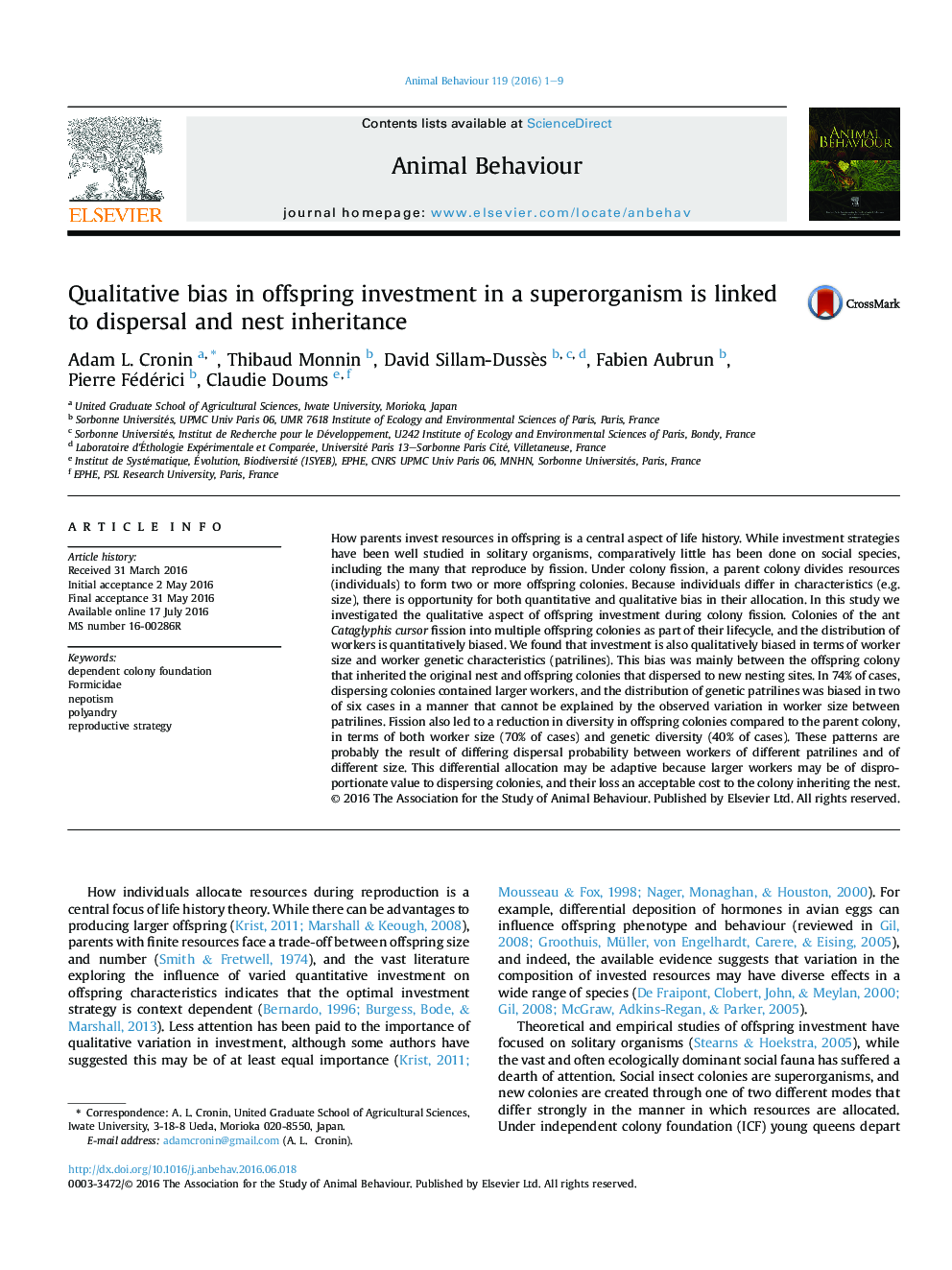| کد مقاله | کد نشریه | سال انتشار | مقاله انگلیسی | نسخه تمام متن |
|---|---|---|---|---|
| 2416257 | 1552209 | 2016 | 9 صفحه PDF | دانلود رایگان |
• Cataglyphis cursor bias resource allocation among new colonies produced by fission.
• Resource allocation is qualitatively biased (by worker size and patriline).
• Most bias occurs between the colony inheriting the nest and colonies dispersing.
• Larger workers and some patrilines are more common in dispersing colonies.
• Bias may be adaptive and probably results from differential dispersing propensities.
How parents invest resources in offspring is a central aspect of life history. While investment strategies have been well studied in solitary organisms, comparatively little has been done on social species, including the many that reproduce by fission. Under colony fission, a parent colony divides resources (individuals) to form two or more offspring colonies. Because individuals differ in characteristics (e.g. size), there is opportunity for both quantitative and qualitative bias in their allocation. In this study we investigated the qualitative aspect of offspring investment during colony fission. Colonies of the ant Cataglyphis cursor fission into multiple offspring colonies as part of their lifecycle, and the distribution of workers is quantitatively biased. We found that investment is also qualitatively biased in terms of worker size and worker genetic characteristics (patrilines). This bias was mainly between the offspring colony that inherited the original nest and offspring colonies that dispersed to new nesting sites. In 74% of cases, dispersing colonies contained larger workers, and the distribution of genetic patrilines was biased in two of six cases in a manner that cannot be explained by the observed variation in worker size between patrilines. Fission also led to a reduction in diversity in offspring colonies compared to the parent colony, in terms of both worker size (70% of cases) and genetic diversity (40% of cases). These patterns are probably the result of differing dispersal probability between workers of different patrilines and of different size. This differential allocation may be adaptive because larger workers may be of disproportionate value to dispersing colonies, and their loss an acceptable cost to the colony inheriting the nest.
Journal: Animal Behaviour - Volume 119, September 2016, Pages 1–9
